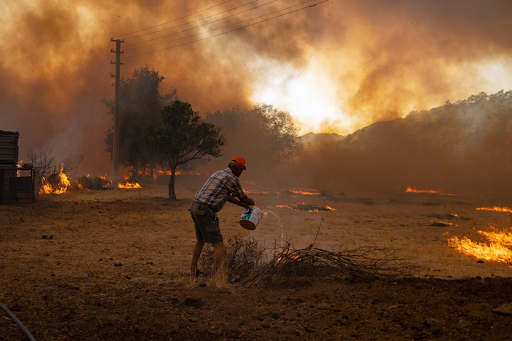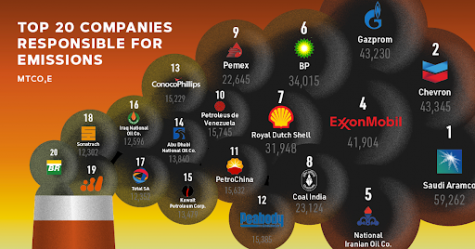The New NOAA Report, Climate, and Public Opinion

An example of how climate change is affecting people.
September 16, 2021
In the early days of 2021, the NOAA (National Oceanic and Atmospheric Administration) released a report detailing how the earth is handling climate change titled “State of the Climate in 2020”. This 481-page report covered a lot of ground, but in 2020, the health of the earth dramatically declined.
Surprisingly, the drop in emissions at the beginning of COVID in early 2020 had no effect on environmental destruction. The average CO2 concentration on earth’s surface still measured 412.5 ppm, the highest in 121 years. The reason the short halt in emissions didn’t make a dent may have to do with the fact that once emitted into the atmosphere, carbon doesn’t leave for 300-1,000 years, according to NASA.
2020 was also the highest year on record when it comes to methane increases, and the ocean absorbed record levels of CO2. To put it in perspective, the ocean absorbs at least one Hiroshima bomb’s worth of heat every second of every day. In addition, sea levels have been rising due to melting ice and… Arctic wildfires? Yes, even the Arctic is on fire. In the U.S. alone, 22 climate disasters (such as hurricane Delta) were declared, each costing over 1 billion dollars to the country.
All of these numbers may sound confounding, but this kind of data has been around for a long time. The new NOAA report comes after another report done by the UN Intergovernmental Panel on Climate Change declared that without immediate action, limiting climate warming will be nearly impossible. Scientists have known for years that 1.5 degrees celsius is the highest temperature increase from pre-industrial levels that the earth can handle before “tipping points”, or points of no return are reached.
In the summer of 2021, however, these metrics became real for millions of Americans, as well as people around the world. Aside from wildfires that stole people’s homes and hurricanes that submerged countless towns, heatwaves alone killed hundreds. Many of the people who died from heat waves lived in the midwest, many of whom had not needed air conditioners in years and decades past.
To make matters worse, the 1.5 degree celsius tipping point that scientists use could be reached in the next 5 years, marking the beginning of a string of climate disasters upon which the human race will have no control. Sounds kind of daunting, right? As the facts of climate change have become more widespread, more and more people have developed symptoms of something experts have named “climate anxiety”. People have started asking questions like: Should I have kids? Where can I move to avoid natural disasters?
The cause of climate change is obviously beyond the power of any one individual, making climate anxiety especially hard to deal with. Some experts say people can express their feelings by talking to others about it, through art, journaling, meditation, and becoming involved in community climate-related activities. Climate anxiety can also, however, present itself in the form of denial. Studies have found that two-thirds of adults in the U.S. think the federal government is not doing enough to address climate change. Further, only 49% believe that climate change is in fact caused by the actions of the human race. Because the evidence is so incriminating, one must ask how a part of this percentage might be related to denial.
In relation to recent scientific findings, these statistics show that the beliefs of many are not based on the findings shown in current scientific data. This brings about the discussion of climate education. The UN states that “education is the key to addressing climate change”. Many believe that people who are informed about climate change will change their behavior. Climate education can come in the form of school classes, or even something as simple as a weather reporter creating a mock report based on projected weather patterns in the year 2050.

Addressing climate anxiety and providing proper education, however, does not change the fact that over 70% of emissions come from just 100 corporations- not individuals. Because of this, many say that the only way to effectively fight climate change is through government action. Currently, few countries are doing enough to manage corporations and slow emissions. Goals set by the Biden administration such as reducing emissions by 50% before the year 2030 simply aren’t cutting it anymore. Even deals made in situations such as the Paris Climate Accords are not being strictly followed by countries involved.
In the coming weeks and months, climate change will continue to present itself in the U.S. and around the world. Some are hopeful this will sway the opinions of people and governments in order to make decent changes. After all, if people couldn’t acknowledge climate change before, the clear presentation through natural disasters will change minds, right?
Hurricane Ida for example, prompted President Biden to make a statement saying that action on climate change needs to increase. Numerous people say this may be the beginning of bold action. Others think they have seen this time and time again. Either way, the environment isn’t planning on waiting, especially in 2021.

